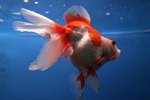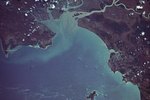
You have several different options for saltwater aquarium substrates, and each has its own pros and cons. Aquarium hobbyists broadly divide marine aquariums into fish-only aquariums and reef tanks; each has distinctive features you need to take into account when selecting a substrate. Remember that no one substrate is always the "right" choice.
Reactive Gravel for Calcium
Some substrates, like coral sand, argonite and other calcium-rich gravel, can influence water chemistry. Specifically, these substrates leach calcium and trace elements into aquarium water. In reef aquariums this improves water chemistry. Coral and other reef-tank invertebrates actively absorb calcium from the water, and need supplemental calcium to survive. Adding gravels like these can greatly benefit the water chemistry in such an aquarium, and provide a stopgap for declining calcium levels.
Gravel for Fish-Only Setups
In fish-only aquariums, you may want to use inert gravels. With no coral or calcium-consuming invertebrates, you don't need to alter the calcium level. Most pet shop aquarium gravels have an epoxy coating, rendering them chemically inert. These substrates have virtually no effect on the water chemistry, beyond providing a space for beneficial bacteria to grow. However, if you keep burrowing fish like blennies or jawfish, gravel can harm them when they try to burrow. If you have burrowing species, you should stick to sands. Silica-based sands, such as those available from hardware stores as "play sand," have no effect on water chemistry.
The Bare Tank Approach
In some aquariums you can skip substrate entirely. Bare tanks offer some advantages. For one, food can't get caught in the substrate and foul the water. This makes bare tanks useful for quarantine or breeding aquariums. In some aquariums, substrate is restricted to the sump filter, outside the main aquarium. This setup offers the benefit of the biological filtration and calcium that substrates offer, without the chance of debris getting stuck in the substrate and fouling the water.
Living Sand
You may also see live sand for sale. Live sand consists of sandy substrates colonized by beneficial bacteria. These bacteria eat fish waste, improving water quality. Aquariums depend on these bacteria for biological filtration, but it can take time for them to establish colonies. Buying live sand allows you to jump-start this process, having the colonies already up and running from the moment you add your substrate. Live sand can consist of calcium-based or inert sand and you can buy it either per-packaged or directly from aquariums, depending on the pet shop.
References
Photo Credits
-
Ablestock.com/AbleStock.com/Getty Images




